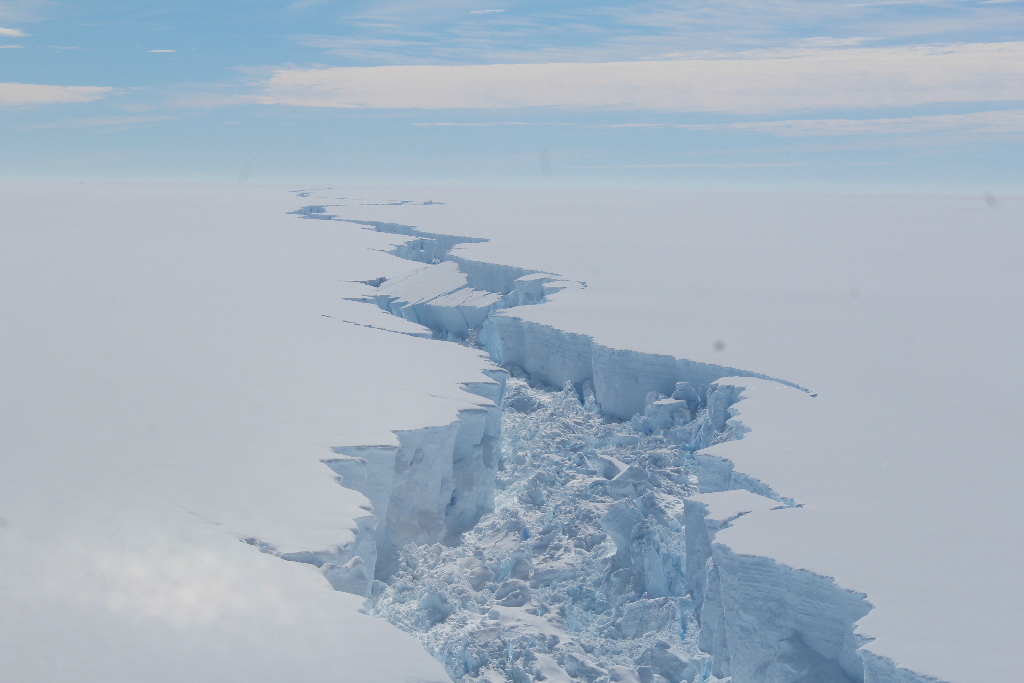Photo by Christopher Jones/Susanne Lockhart
Minimising impacts on the environment
In earlier blogs, we have explored the actions that CCAMLR took to deal with specific challenges arising from fishing activities, but throughout the last 40 years, the organisation has also taken precautionary measures to guard against a wide range of other impacts, both known and possible.
For instance, in 1990 CCAMLR passed Resolution 7/IX which endorsed the goals of UN General Assembly Resolution 44/225 and determined there would be no expansion of large-scale pelagic driftnet fishing in the Convention Area. This was a precautionary measure since at the time there was no such activity in CCAMLR waters. While this seems like old news, at the time it was an important signal that the Commission would be proactive in protecting the Antarctic environment. Other examples of this include a resolution encouraging early adoption of the Ballast Water Management Convention which CCAMLR adopted 10 years before the Convention came into force, and CCAMLR’s 2010 prohibition on using deep-sea gillnetting as a fishing method.
Bottom trawling in all high-seas areas within the Convention Area has been prohibited since 2006 and the only current CCAMLR high-seas fisheries are pelagic trawling for krill, and bottom fished longlines for toothfish. To protect shelf-based benthic systems, bottom fishing in exploratory Dissostichus spp. fisheries is prohibited in water shallower than 550 m around the entire Antarctic continent.
In 2006 CCAMLR adopted a comprehensive conservation measure delivering environmental protection during fishing. This general measure on environmental protection recognises MARPOL requirements and prohibits vessels from discarding plastics or fuel oil and from using plastic packaging bands which, if lost from a vessel, can entangle seabirds and seals. Recognising the specific protection that applies under the Protocol on Environmental Protection to the Antarctic Treaty to the areas south of 60° South, in this area it prohibits discarding any garbage, food waste unless mashed into very small pieces, poultry and offal from processed fish. This means that vessels fishing south of 60° South must usually retain all these materials until they leave the area. In 2007 CCAMLR implemented a comprehensive measure to protect vulnerable marine ecosystems (VMEs), recognising the 2006 UN General Assembly Resolution 61/105 on this issue. VMEs include features such as seamounts, hydrothermal vents and cold-water coral and sponge habitats. The measure applies to all high-seas areas of the Convention Area and requires an assessment of the impact of activities on VMEs, and the development of measures to reduce these impacts.

Photo: Christopher Jones/Susanne Lockhart, USA
CCAMLR found that longline hooks can snag VME fauna such as sponges and corals, and so it was possible to detect when large numbers of these animals were being caught. CCAMLR put protection in place specifically around these areas, essentially closing the areas to fishing until a formal evaluation of their status can be completed. So far, 82 of these “VME risk areas” have been identified and protected, most of them are in the Ross Sea given the level of fishing effort, and an additional 53 important VMEs have been found through scientific research which are also protected.

CCAMLR started to consider climate change in the mid-2000s, later making the issue a regular agenda item at its meetings. Like other areas of the globe, climate change is not uniform over the whole of the Antarctic. CCAMLR regularly reviews these changes and their likely impacts on the ecosystem to understand how this could affect its management of the ecosystem. Relevant research includes, for example, surveys of krill distribution and abundance that have recently been undertaken in the South Atlantic and southern Indian Oceans by several Members, and research on predators through the CCAMLR Ecosystem Monitoring Program (CEMP) (see Blogs #2 and #3).
In some areas, glaciers are retreating, revealing newly exposed marine areas of which very little is known. CCAMLR has afforded temporary protection to two of these areas to allow for scientific study to take place. One of these is Pine Island Glacier at the southern end of the Antarctic Peninsula, which has undergone significant reduction since 2015 and is currently the single largest contributor to the rapid loss of ice from the West Antarctic Ice Sheet. The other is the area exposed by the calving of the world’s largest recorded iceberg from the Larsen C Ice Shelf in the Weddell Sea.
In addition to CEMP, in 1989 CCAMLR established a program to monitor marine debris, and particularly fishing debris. Members annually submit data using a standardised set of forms and instructions covering marine debris from beach surveys, debris associated with seabird colonies, entanglements of marine mammals, and hydrocarbon soiling of mammals and seabirds. The CCAMLR Marine Debris Database contains data from 15 sites, predominantly in the Antarctic Peninsula and on sub-Antarctic islands.
